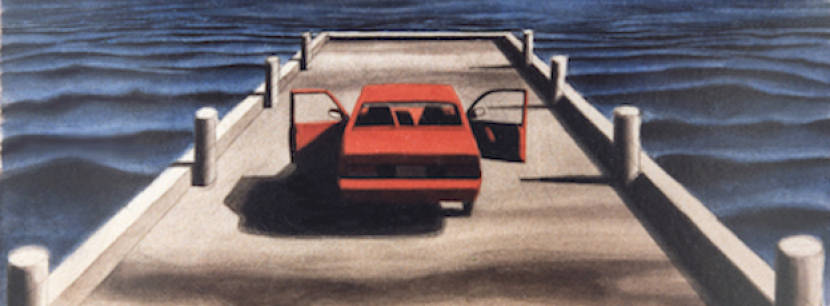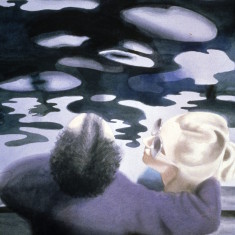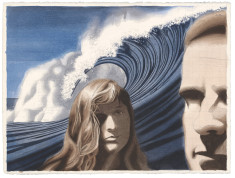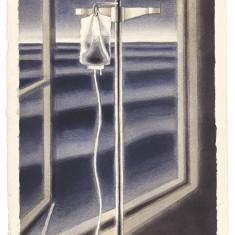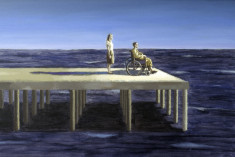Water
Ever-changing and vast, water invites voyages of the imagination, as well as evoking a sense of place. For Robert, that place was his native Nova Scotia. In Harbour, a couple, seen from above, view a dazzling array of irregular shapes and foamy swirls in moving water. In his painting, Surf, an enormous wave crashes between a couple. Water is a symbol of the transformative power of love, both in its positive inspirational aspects and its repetitive, self-destructive aspects. The crashing wave alludes to Hokusai, the great Japanese artist, though Robert’s landscapes invariably feature people and the tensions between them. This can be seen in the painting High, where a couple dance on the edge of a cliff. Romance is exciting, but not without danger. Wharf shows an abandoned car on a wooden pier that overlooks an expanse of ocean, Robert’s end-of-the-road motif. There is an eerie absence of people in this image. Intravenous Solution and Ocean makes a connection between a temporary medical intervention while a patient recovers in hospital, and the timeless nature of the ocean whose rhythms outlast any individual life. In Healing Robert portrays himself as a patient in a wheelchair on a wharf; a woman stands behind him and the ocean stretches out before him. The patient is posed between two sources of inspiration, friend and ocean. There is a starkness to this image because there are none of the easy comforts of life here. The end of the road and the beginning of infinity, Robert calls the painting, “Healing,” as if this is the point at which the scars in the mind from the ordeal of illness begin to transform to a new level of consciousness.
